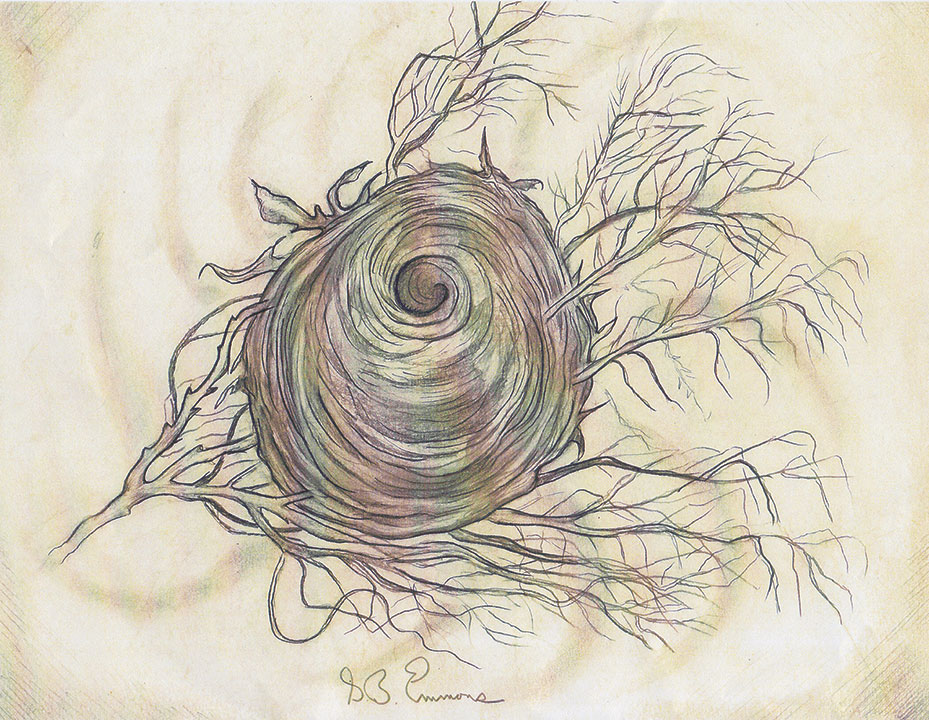Hornets construct their nests by mixing their own saliva with wood pulp and chew it into a compound that is woven into a geometrical pattern of outside covering. Underneath and deeper inside is a cell structure into which eggs are placed called “combs.”
There are usually two kinds of hornets that build nests up in a tree interwoven with supporting branches and sometimes higher up under the corner of a building roof. The first is a very nasty Bald-Faced Hornet, and second is a recently invasive European Hornet that is just as mean.
All hornets build their nests with a single-entry hole, as illustrated, for seclusion to discourage entrance of unwanted visitors as well as protection from outside weather elements. An active nest can be dangerous for nearby homeowners to be stung one or more times.
You should not try to get rid of the nest no matter where it might be but instead call a professional control officer at 508-471-6437. Also, nearby may be ground-nesting yellowjackets down in a hole in the ground often near the foundation of a building.
Yellowjackets are even more dangerous and when discovered quickly whip themselves into a wild swarm of revenge that will follow and attack anyone running away. These stings are even more painful because their serum contains a large amount of (5 percent) poison. Their stinger is very finely barbed to be able to withdraw it out quickly and sting you more than once. All this repeated potential should warn you to use extreme caution if stung and seek immediate medical attention afterwards.
The lifestyle of a nest has begun already now in spring with a single queen who dominates the progress of reproduction of her many workers in all tasks of building the hive, seeking food and the disciplined ritual of fertilizing her eggs when the time comes. The queen implants them in compartments called “combs” where they progress through five stages of maturity called “metamorphosis.” As soon as the fertilization is done, the worker has finished his lifetime task and dies.
In colder climates in the coming winter at thus location, the queen and any drones left seek a warmer refuge than the hive and abandon it for protection in the hollow branch of a tree or down a hole in the ground below the frost line. Once you are sure the Queen Matron and all her subjects are gone, the treasure of an empty nest can be carefully cut down and preserved for display in your home.
You may point out that your treasure, like a bird’s nest, is woven into a pattern that seems to follow a clockwise direction of construction, like a favorable weather movement in the northern hemisphere. Your preservation of the hive will interest nature lovers of all ages with an environmental awareness of what anyone should know about hornet nests.
By George B. Emmons
